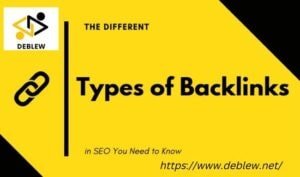Importance of SERPs in SEO
Search Engine Results Pages (SERPs) are a critical component of SEO. They are the web pages that list the results of a user’s search query after they type it into a search engine, such as Google.
SERPs provide a wealth of information to users and businesses alike, so understanding their importance is key for optimizing websites for maximum visibility.
When thoughtfully designed and executed, businesses can use SERPs to drive more organic traffic to their website.
Why Are SERPs Important for Search Engine Optimization (SEO)?
Search Engine Result Pages (SERPs) are an integral part of Search Engine Optimization (SEO). SERPs provide a way for webmasters and SEO professionals to understand how their website is performing in search engine rankings.
By understanding the SERP landscape, webmasters can better optimize their pages for better visibility and higher organic traffic from search engines.
SERPs also provide insight into what users are looking for when they type in queries into search engines.
By studying the terms and phrases used by people to find relevant websites, webmasters can focus on optimizing content around those topics to make their websites more visible.
Additionally, if certain topics rank highly in SERPs but your page does not rank well then you will know exactly what needs to be done to increase your presence on the SERP.
What are the different types of search queries?
Search queries are the words and phrases used to request information from search engines such as Google, Yahoo, or Bing. Search queries can be broken down into different categories based on their purpose:
Navigational Queries
A navigational query is a type of search query used to bring people to a specific website or find particular information on the internet.
It is often used when searching for an exact web page, such as a business’s homepage or a product page.
Navigational queries are easy to recognize, as they typically use the name of the business, product line, or website followed by terms such as “site” or “login” in the search box.
Search engines such as Google and Bing are designed to deliver accurate results for navigational queries by recognizing words like “site,” “homepage,” and “login” so that users can quickly find what they’re looking for.
Even though these searches may seem basic, they still require search engines to be able to understand the context of user inquiries and provide relevant results.
Informational Queries
An informational Query is a type of search query that enables internet users to find specific information. It consists of keyword phrases such as questions or statements related to a topic.
This type of query is used by people who are seeking out factual information on a particular subject, including but not limited to medical advice, technology news, and product reviews.
Informational queries often take the form of natural language requests like “Where can I buy dark chocolate?” or “What is the best way to cook salmon?”
By asking these types of questions, users can quickly and accurately access the information they need to make an informed decision.
Additionally, informational queries help search engines match relevant content with user intent since they typically consist of longer and more detailed keywords than other types of searches.
Transactional Queries
The transactional query is the type of search query used to identify, acquire and purchase products or services. It is a type of query that requires an immediate response from the user.
Transactional queries come in two forms – informational and navigational searches. The former involves looking for specific information while the latter involves finding a specific website or web page.
Informational transactional queries are used to find factual information such as product reviews, specifications, prices, and availability.
Navigational transactional queries are used to find a specific website or web page such as an online store where users can buy items they need.
These two types of transactional queries help users accomplish their goals more quickly by providing them with direct access to what they’re looking for in just one search.
Elements of SERPs
Understanding the elements of SERPs is essential for digital marketers who want to increase their visibility online and reach potential customers.
Organic Search Results
The organic search result is a critical element of Search Engine Result Pages (SERPs). Organic searches are results that appear naturally due to their relevance to the search query.
They are not paid advertisements and represent content that is most relevant to the user’s query. This makes organic search results in an important part of any SERP, as they provide users with useful information and answers to their queries.
To create successful organic search results, businesses must utilize effective SEO techniques such as keyword research and link building.
This helps ensure their websites appear in relevant SERPs, allowing them to gain more visibility on the web. Additionally, it’s important for businesses to regularly update their content so that it remains fresh and relevant for users searching for related topics.
Paid Search Results
A paid search result is an essential element of Search Engine Result Pages (SERPs). It is a way for businesses to gain visibility through investing in ads and sponsored listings.
As the name implies, businesses pay to appear in the SERPs, allowing them to be more quickly discovered by online audiences.
The paid search result also helps create more accurate and tailored results that are specific to each user’s needs.
This ensures that people find what they are looking for within a shorter period while giving businesses the chance to target their audience with more accuracy than ever before.
With paid search results, companies can easily track the success of their campaigns using metrics such as click-through rates and cost per click (CPC).
In addition, they can adjust campaigns based on these metrics to optimize performance over time.
Featured Snippets
A featured snippet is quickly becoming the most important element of search engine result pages (SERPs). A featured snippet, also known as a position zero ranking, is an answer box that appears at the top of a SERP page.
It typically includes a summary of the best answer to a user’s query, taken from one of the web pages in the organic search results.
This selection and presentation of content help users get access to information more quickly than simply scanning through all available web pages on their own.
Featured snippets are increasingly influential with both consumers and businesses alike.
Consumers often find answers straight away without needing to click through to other websites, while businesses benefit by having their website presented alongside Google’s answer box.
In addition, appearing as a featured snippet puts them front and centre when it comes to search engine rankings and visibility.
Direct Answer Box
The Direct Answer Box is one of the most important elements of search engine result pages (SERPs). It provides users with direct answers to their queries, saving them time and effort in researching topics.
The Direct Answer Box has revolutionized SERP results by providing a range of information from different sources. This includes details such as addresses, phone numbers, and other types of information that may not be available on traditional web pages.
Google uses its proprietary algorithm to determine which websites are the most relevant for the query and then compiles information from those websites into an answer box.
This ensures that users receive accurate and reliable answers that are up-to-date with current trends or events in their area. Optimizing content for this element can help increase website visibility, as it puts your site front and centre on SERPs.
Knowledge Graph and Knowledge Panel
Knowledge Graph and Knowledge Panel are two of the most important elements of Search Engine Results Pages (SERPs). They are part of Google’s search engine algorithm which is designed to provide users with relevant and accurate information.
In recent years, these features have become increasingly popular due to their ability to quickly deliver concise answers to queries as well as offer additional content related to a topic.
The Knowledge Graph, or KG, was first introduced by Google in 2012. Its purpose is to provide context and understanding for people when searching for certain topics by providing data from sites such as Wikipedia, Freebase, and Wikidata.
The graph allows users to find more detailed information about a topic in an organized manner rather than having them sift through multiple sources online.
The Knowledge Panel is also provided by Google to give more comprehensive answers in SERPs.
Local Packs
Local packs are a key element of search engine result pages (SERPs). They appear in the form of three local listings that display the above organic search results and feature important information about businesses such as their name, address, phone number and website URL. Local packs also include a map with pins indicating the location of each business.
The purpose of local packs is to provide searchers with relevant local business information that is tailored to their location.
By including these listings on SERPs, users can quickly identify the best businesses for their needs without having to go through the process of researching individual businesses one by one.
As such, they can make faster decisions and save time when searching for specific goods or services in their area.
Google Image Results
Google Image Results are an essential part of any search engine results page (SERP). They offer a unique visual representation of the topic at hand, helping users quickly identify what they’re looking for.
In addition to providing helpful information, image results can also have a significant impact on click-through rates and conversions.
Images within SERPs are generated through Google Images, which is powered by the same algorithm as Google’s general search engine.
By using advanced technologies such as machine learning and artificial intelligence (AI), it provides users with relevant images for their queries.
Furthermore, it can detect objects in images and understand their context to offer better suggestions for related searches.
This helps ensure that these images add value to the user experience and contribute positively to SERP’s overall performance.
Video Results
Video results are dominating search engine result pages (SERPs). No longer are we greeted by simple text listings when performing a query?
Instead, videos from YouTube and other video sites have become a common fixture on SERPs — and for good reason. Video content can provide quick, concise information that text-only search results cannot offer.
As such, businesses need to take advantage of this high-visibility opportunity.
An optimized video listing can drive more traffic to your website than traditional textual results, as well as engage viewers with your product or service in ways that weren’t possible before.
By understanding how video rankings work and implementing strategies to improve them, you can make sure that you get the most out of an investment in online videos.
People Also Ask
People Also Ask (PAA) is one of the most important elements of a Search Engine Results Page (SERP). It is an effective way to provide additional information regarding a user’s query.
PAA can be found at the top of SERPs, usually towards the right side. It consists of a box where each question and its corresponding answer appear in collapsible sections. By clicking on any question, users can access more detailed answers to their queries.
PAA is one of Google’s numerous algorithms developed to help improve SERPs. It encourages users to explore different topics associated with their search query by providing them with related questions and answers on the same page.
This helps reduce bounce rates as people can get better information about what they are looking for without having to go back to the search engine or click through other pages.
Top Stories
The top stories on search engine results pages (SERPs) are the most important elements to consider when optimizing a website.
Search engines use algorithms to determine which websites appear at the top of SERPs, and this is why creating high-quality content is essential for improving visibility in search engine rankings.
To get the maximum benefit from SEO efforts, understanding how these stories work and what makes them stand out is key.
These top stories are generated based on user data gathered by the search engine and can vary greatly depending on an individual’s location and search history.
Additionally, they may be tailored to specific topics that are trending or relevant in the news. For example, if a particular subject has been heavily covered in recent days then it may appear as part of a SERP’s top story section.
Google Shopping Results
Google Shopping Results are the Elements of SERPs and offer an array of benefits that can help businesses reach their goals.
By providing shoppers with insights into the products and services they’re looking for, Google Shopping makes it easier to find what they need quickly.
Plus, when shoppers use Google Shopping to make a purchase, businesses benefit from increased visibility in the organic search engine results pages (SERPs).
Google Shopping allows companies to manage product listings across multiple platforms while optimizing keywords and other elements that impact SERP rankings.
Businesses also have access to advanced analytics tools that track performance metrics such as click-through rates, cost per click, impressions, and more.
With these tools in hand, companies can better understand how their products are being found by potential customers online.
How do SERPs work?
Search Engine Results Pages (SERPs) are the pages that appear when a user searches for specific keywords or phrases on the Internet.
SERPs provide users with relevant web pages, images, and videos related to their queries. To understand how SERPs work, it is important to understand the components of a SERP.
The most important component of a SERP is its organic listings. These are results that appear as part of the natural search engine algorithm and are usually based on relevance and quality of content rather than financial payment from advertisers.
Additionally, there may be sponsored listings which businesses have paid for to be displayed prominently in search engine results.
Finally, depending on what was searched for, other features such as shopping ads, local map listings and knowledge graph boxes may also appear in a SERP.
FAQs
What are the 3 common elements for each result on SERP?
The 3 common elements for each result on a Search Engine Results Page (SERP) are the title, URL, and meta description. The title is the clickable headline of the page, the URL is the web address of the page, and the meta description is a summary of what visitors can expect to find on that page.
What is the difference between SEO and SERP?
SEO (Search Engine Optimization) is a set of strategies and techniques used to increase the visibility of a website in search engine results. SERP (Search Engine Results Page) is the page that appears when you type a query into a search engine like Google. It includes organic results based on SEO as well as paid ads, local listings, and other features.
What is the SERP strategy?
SERP stands for Search Engine Result Page strategy. It is a set of tactics and techniques used to increase the visibility of a website in search engine results pages (SERPs).
This can include optimizing content, using keywords, link building, and creating backlinks. Implementing a SERP strategy can help improve website traffic and visibility.
What can SERP include?
Search Engine Results Pages (SERP) can include organic search results, paid ads, images, videos, local listings, and more. SERPs are tailored to the user’s query and change depending on the search engine used.
How can I improve my SERP results?
To improve your SERP results, focus on optimizing your website for search engines. This includes making sure that all content is keyword-rich and relevant to your target audience, creating a well-structured navigation system, and ensuring that all pages are properly indexed. Additionally, link building can help drive more traffic to your website from external sources.
How do you target SERP features?
To target SERP features, you need to focus on optimizing your website for specific keywords related to the feature you want to appear in.
You also need to make sure your content is relevant and well-structured so it can be easily crawled and indexed by search engines.
Additionally, use structured data markup on your website to help search engines better understand the content on your pages.
Finally, create a high-quality backlink profile with authoritative websites to boost your visibility in SERPs.
Final Thoughts
In conclusion, Search Engine Results Pages (SERPs) are integral in driving organic traffic and promoting brand visibility online.
By optimizing their website to appear higher on SERPs, marketers can increase their website’s visibility and reach a larger potential customer base.
SEO techniques such as keyword optimization, link building, and content optimization can help leverage the power of SERPs for maximum impact. Although SEO is an ever-evolving field, SERPs will always remain at the core of any successful SEO strategy.








Hello! Do you know if they make any plugins to assist
with Search Engine Optimization? I’m trying to get my
blog to rank for some targeted keywords but I’m not
seeing very good results. If you know of any please share.
Kudos! You can read similar art here: Eco wool